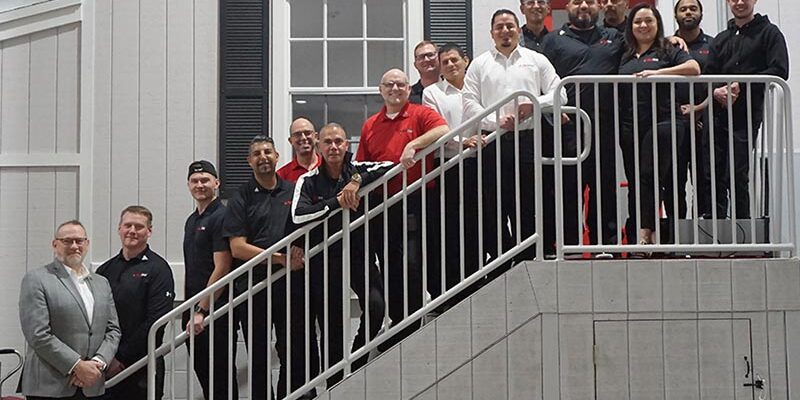Power of Planning: Succeed with a unified point of focus

Much like a boxer who punches using only his arm rather than his whole body, organizations lose power without a unifying point of focus which ensures everyone understands where the company is going, how it is planning to get there and what each individual’s role is as part of that process.
A marketing plan should represent that unifying point of focus, but why is it that so many marketing plans end up on a shelf gathering dust, never to be read again?
In my opinion, it is because such plans are typically written by the owner and/or the marketing executive in isolation from the rest of the team. In many cases, the plan is not even shared with the rest of the team once it is written! It’s pretty hard to get “buy in” on something people aren’t even aware of.
Set the planning in motion
There are many, many guides to writing marketing plans that explain which sections should be included, what should be covered and so on. And all this is important because going through the exercise of creating a formal marketing plan causes you to really think about every aspect of the marketing environment, draw some conclusions and make decisions about how the company will operate.
This set of decisions is, in essence, the set of assumptions that the company will base its operations upon. You may be completely right, partially right or somewhat wrong (only time will tell), but the planning process forces you to make decisions and choices and moves you from stasis to action.
Once you are in action based on your plan, assuming that you make no catastrophic miscalculations, there are no “mistakes” — only feedback that tells you what to do differently. This is why companies who consistently utilize planning find themselves in alignment, measuring their metrics to see how close their assumptions were to reality, and adjusting those assumptions and marketing activities based on real-world feedback.
A marketing plan written five years ago and never looked at again was a waste of time. Marketing planning feeds marketing action and measurement on an ongoing basis. It is an ongoing process, not an event, and should be a constant undercurrent of the company’s operations.
Another way to think about the marketing plan is that it is fundamentally the articulation of a vision for the company followed by a set of goals to achieve that vision and then a set of activities to achieve those goals.
Vision is a function of leadership. Leadership may be a singular owner, a group of partners or an executive committee, but someone or some group must wear the mantle of leadership and point the organization in a specific direction. As the old saying goes, “If you don’t know where you’re going, any road will take you there.”
And while this may sound simplistic, it is extremely common for business owners to lack vision and, therefore, direction for their companies. They become so bogged down working in the business and trying to make a living that their vision can become simply opportunistic — looking for the big score, the large loss, or the really busy winter that generates additional profits or simply maintains the status quo.
But what kinds of people are attracted to such a situation? It is clear that businesses do not grow without talented people who are inspired, engaged, committed and excited about the work they do.
A popular belief is that most people leave a job because of pay. But a Gallup poll of over one million employed American workers suggests otherwise. People quit bosses, not jobs. This poll makes it clear that the number one reason people quit is due to bad bosses, the negative environment they create and the way they treat their employees.
So what do good people want? While good, competitive pay is important, the business owner must realize he or she needs to create an environment which supports employee involvement, meaningful work and professional development.
This means you create a culture where ownership and management see their people as the company’s most important asset. In short, you have to love your people because you won’t get “there” without them. Your people must know leadership truly values them and seeks to give them opportunities to maximize their potential.
Owners who really understand the value of their people know it is not just the formal opportunities they present their team, but also that they treat them with a sense of high expectations coupled with high appreciation and common decency. Always treating your people with dignity, even when they simply aren’t qualified to continue as part of the team and must have their future “freed up,” sends a powerful message to your people about the type of culture at your company.
Good people also crave leadership. People want to be engaged in meaningful work; people want to make a difference in the world, and they generally want to be a part of something they see as good and important. This means leadership must articulate the vision of who the company is, what core values the company embodies and where the company is going. Leaders need to communicate clear direction and priorities, set high expectations, and then give people the tools, processes and training to live up to those expectations.

Keep your company vision in mind when brainstorming to create a marketing plan. [Image courtesy of Rawpixel Ltd/iStockPhoto]
Benefits of team marketing
This is why marketing planning that involves as much of your team as possible can be so impactful in getting your company to “punch with the whole body” and make an impact on the marketplace.
Yes, you have to slow down the process. Yes, you have to do some teaching to get people who are not familiar with the marketing planning process to understand the steps that need to be taken. But you will more than make up for these drawbacks when the team really understands your vision and is part of goal setting and making the decisions about which activities will take place to accomplish those goals.
Involving your team this way engages your people in very important aspects of running the business and challenges them to solve problems and participate in determining how the company is run, which builds trust and makes employees feel valued.
Involving your team in planning also responds to people’s need to do meaningful work. Understanding the goals and being a part of building a business, of creating or manifesting a dream in the real world, is engaging and exciting even if most of the time they estimate rebuild projects or pay bills. Employees begin to see their role in the context of the bigger picture and the plan, and, instead of drudgery or just doing “a job,” they are part of a grand enterprise.
Involving your team in the planning process also helps meet people’s need for ongoing learning and professional development. People tasked with planning responsibilities will often surprise you with their effort, knowledge and contributions once they are given some basic ground rules to follow and permission to participate.
Be sure to offer them the necessary training and coaching to become more effective at the planning process and involve them in the monthly or quarterly plan reviews so they can see the fruits of their labors, for good and bad. Let them take responsibility both ways so they can learn what they need to do better as a team as well as individually.
When planning is approached this way, there often is an amazing, synergistic effect: The entire team — from ownership to the front lines — understands what the company stands for and where it is going, is bought in on the plan to achieve the stated goals, and takes far more individual responsibility as a part of a team that is trying to accomplish great things.
In summary, the words of Margaret Mead are apropos, “Never doubt that a small group of thoughtful, committed citizens can change the world; indeed, it’s the only thing that ever has.”
Timothy Miller is the president of Business Development Associates Inc., a marketing strategy, sales training, recruiting, and operations and management consultancy, which specializes exclusively in working with restoration contractors, helping them drive the growth of their businesses without relying on programs, weather or good luck. For a free white paper on the Six Secrets of Restoration Business Success, email at [email protected] or call (847) 386-6556.












